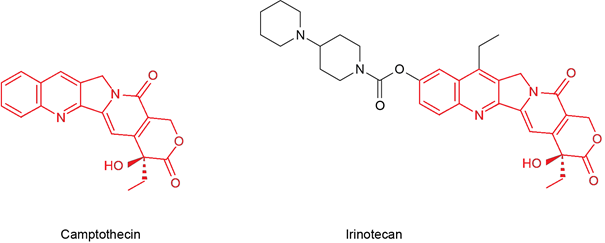Semi-synthetic Chemical Medicines
7. Example - Anti-cancer medicines
Cancer is often treated with chemotherapy medicines that kill cells undergoing rapid growth (which most cancer cells do). One example of a semi-synthetically derived anti-cancer medicine is irinotecan, which is mainly used to treat colon cancer.

Figure 1.2 Camptotheca acuminata (Link to the source)
Irinotecan is produced by chemical modification of camptothecin, a molecule naturally produced by Camptotheca acuminata, called the ‘happy tree’ that is native to China. When researchers discovered camptothecin and tested its potential as a cancer medicine, they observed anti-tumour activity – but also found that the treatment induced unpredictable side effects. Consequently, camptothecin was chemically modified to develop the new medicine irinotecan, which has a more predictable side-effect profile than the naturally occurring molecule. The synthesis of irinotecan from camptothecin requires extensive modification of the chemical structure (Figure 3.3).

Figure 3.3. Chemical structure of naturally occurring camptothecin and the semi-synthetic irinotecan.